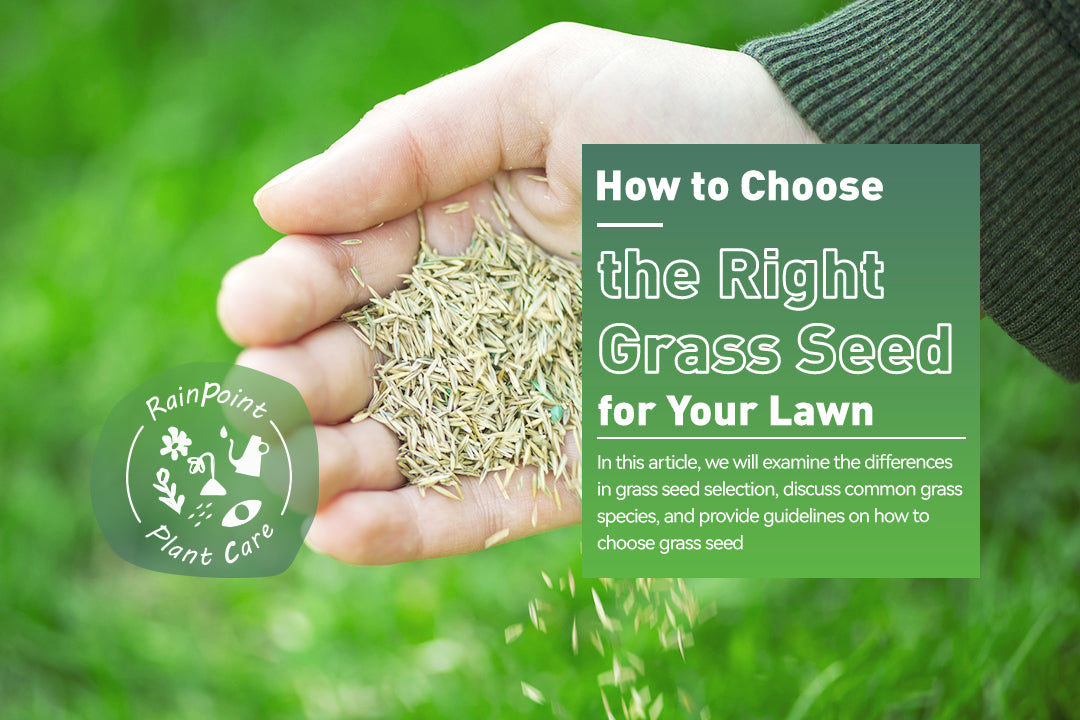Choosing the right grass seed is key to a beautiful lawn. With so many options, it can be confusing. This guide will help you make the best choice for your yard.
Understand Your Climate
Different grass types thrive in different climates. Know your climate to pick the right grass.
- Cool-season grasses grow best in areas with cold winters.
- Warm-season grasses thrive in hot, humid climates.
Cool-season Grasses
These grasses do well in areas with cold winters and hot summers.
- Kentucky Bluegrass: This grass is very popular. It is known for its rich color and texture.
- Perennial Ryegrass: This grass grows fast and is good for high-traffic areas.
- Fescue: This grass is very durable. It does well in shady areas.
Warm-season Grasses
These grasses are great for hot, humid climates.
- Bermuda Grass: This grass is very hardy and can handle a lot of sun and traffic.
- Zoysia Grass: This grass is very dense. It can handle some shade and foot traffic.
- St. Augustine Grass: This grass is great for coastal areas. It does well in sandy soil and salt air.

Credit: www.rainpointonline.com
Consider Your Lawn’s Conditions
Your lawn’s specific conditions will also affect your grass choice. Think about these factors:
- Sunlight: How much sun does your lawn get? Some grasses need full sun, while others do well in shade.
- Soil Type: Is your soil sandy, clay, or loam? Different grasses prefer different soil types.
- Water Availability: Do you have a lot of water for irrigation? Some grasses need more water than others.
- Foot Traffic: Will people be walking on your lawn a lot? Some grasses are more durable than others.
Grass For Sunny Areas
If your lawn gets a lot of sun, choose a grass that loves sunlight.
- Bermuda Grass: Great for full sun and high traffic.
- Kentucky Bluegrass: Beautiful in sunny areas with cool weather.
Grass For Shady Areas
If your lawn has a lot of shade, pick a shade-tolerant grass.
- Fescue: Very good for shady spots.
- Zoysia Grass: Can handle some shade and still look great.
Grass For Different Soil Types
Know your soil type to choose the right grass.
- Sandy Soil: Bermuda grass does well in sandy soil.
- Clay Soil: Fescue is a good choice for clay soil.
- Loamy Soil: Kentucky Bluegrass thrives in loamy soil.
Water Needs
Some grasses need more water than others. Choose a grass that fits your watering schedule.
- Bermuda Grass: Needs less water and is drought-tolerant.
- St. Augustine Grass: Needs a lot of water, good for rainy areas.
Foot Traffic
If your lawn gets a lot of foot traffic, pick a durable grass.
- Perennial Ryegrass: Grows fast and is very durable.
- Bermuda Grass: Can handle lots of foot traffic.
Choosing the Right Grass Seed Mixture
Sometimes, a mixture of grass seeds is the best choice. Mixes can offer a variety of benefits.
- Variety of Conditions: Mixes can handle different conditions in your yard.
- Better Disease Resistance: A mix can be more resistant to diseases.
- Seasonal Coverage: Different grasses can thrive in different seasons.
Choosing The Right Mixture
Look for a mixture that matches your lawn’s needs. Check the seed labels for details.
| Seed Type | Best For |
|---|---|
| Kentucky Bluegrass Mix | Cool-season areas with full sun |
| Fescue Mix | Shady areas and cool-season climates |
| Bermuda Grass Mix | Hot climates with full sun |
Buying Quality Grass Seed
Always buy high-quality grass seed. Cheap seed can have lots of weed seeds and fillers.
Check The Label
Look for a label that shows the seed purity and germination rate. Higher numbers mean better quality.
Seed Purity
Seed purity is the percentage of the seed that is the desired grass type. Look for purity above 90%.
Germination Rate
Germination rate is the percentage of seeds that will sprout. A higher rate means more of your seeds will grow.

Credit: www.landscapemulch.com
Preparing Your Lawn for Seeding
Proper preparation ensures your grass seed will grow well. Follow these steps:
- Remove Weeds: Get rid of any weeds in your lawn.
- Loosen Soil: Use a rake or tiller to loosen the soil.
- Test Soil pH: Make sure your soil has the right pH for your grass.
- Add Fertilizer: Use a starter fertilizer to help your grass grow.
Seeding Your Lawn
Spread the grass seed evenly over your lawn. Water the lawn gently but thoroughly.
After Care
Keep the soil moist until the grass is established. Avoid heavy foot traffic until the grass is strong.
Frequently Asked Questions
What Is The Best Grass Seed Type?
The best grass seed type depends on your climate and soil. Research local options for optimal results.
How Do I Choose Grass Seed?
Consider your climate, soil type, and lawn use. Opt for drought-resistant seeds in dry areas.
When Should I Plant Grass Seed?
Plant grass seed in early spring or fall. Mild temperatures aid germination and root establishment.
What Is The Best Grass Seed For Shade?
Fine fescue is excellent for shaded areas. It thrives in low-light conditions.
Conclusion
Choosing the right grass seed is important for a beautiful lawn. Consider your climate, lawn conditions, and needs. Buy high-quality seed and prepare your lawn properly. With the right care, you’ll have a lush, green lawn.
